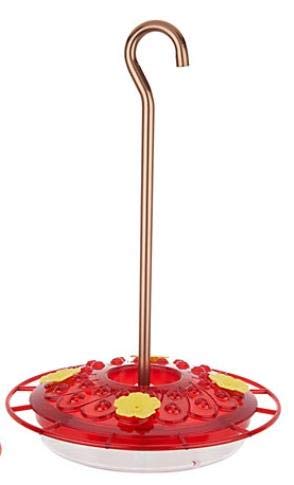Bird watching is a beloved hobby for millions, offering a tranquil escape into the natural world. But what if you could experience the joy of bird feeding without even stepping outside? Bird feeder cameras are revolutionizing the way we observe our feathered friends, bringing the vibrant world of backyard birds directly to our screens. And the next decade promises even more exciting innovations, transforming these devices from simple observation tools into sophisticated ecosystems for avian enthusiasts.
The Rise of High-Definition and AI-Powered Analysis
Current bird feeder cameras already offer impressive capabilities. High-definition video, night vision, and remote access via smartphone apps are standard features. However, the future will see a dramatic leap in image quality, with 4K and even 8K resolutions becoming more commonplace. This heightened clarity will allow for detailed observation of bird behavior, plumage, and even subtle differences between species. Beyond just improved visuals, AI will play a significant role. Imagine a camera that automatically identifies the species of every bird visiting your feeder, logging the data for later analysis. This could revolutionize citizen science initiatives, contributing valuable data on bird populations and migration patterns. AI could even detect unusual behavior, alerting you to potential illness or distress in your avian visitors.
Enhanced Connectivity and Smart Home Integration
Future bird feeder cameras will seamlessly integrate with existing smart home ecosystems. This means controlling the camera, viewing live feeds, and receiving notifications directly through your central smart home hub. Imagine setting automated feeding schedules triggered by the presence of specific bird species, or receiving alerts when a rare bird is detected. This level of integration will create a truly connected and personalized bird watching experience. Furthermore, improved connectivity, perhaps utilizing 5G or even low-earth orbit satellite connections, will enable remote viewing from anywhere in the world, allowing you to keep tabs on your feathered friends even while traveling.
Power Efficiency and Sustainable Design

As environmental consciousness grows, so too will the demand for sustainable technology. Expect to see significant improvements in the power efficiency of bird feeder cameras. Solar-powered options will become more common and efficient, minimizing reliance on batteries and reducing environmental impact. Manufacturers will also prioritize the use of recycled materials and eco-friendly packaging in their production processes. This shift towards sustainability will resonate with environmentally conscious bird watchers, making their hobby even more responsible.
Advanced Audio Capabilities and Bioacoustic Monitoring

While visual observation is crucial, sound plays a vital role in bird identification and behavior studies. The next generation of bird feeder cameras will incorporate advanced audio capabilities, including high-fidelity microphones and sophisticated sound analysis software. This will allow you to record and analyze bird songs, calls, and other soundscapes, further enriching your understanding of avian communication. Some models may even utilize AI to identify bird species based on their vocalizations, complementing the visual identification capabilities. This aspect opens possibilities for bioacoustic monitoring, contributing to scientific research on bird populations and their habitats.
Enhanced Durability and Weather Resistance

Bird feeders are exposed to the elements, so durability is paramount. Future cameras will feature even more robust designs, able to withstand extreme temperatures, heavy rain, and even snow. Improved waterproofing and weather sealing will ensure that your camera continues to function reliably throughout the year, regardless of the weather conditions. Materials resistant to scratching, UV damage, and insect infestation will further enhance longevity and performance.
Data Privacy and Security

With increased connectivity comes the importance of data privacy and security. Manufacturers will need to prioritize robust security measures to protect user data and prevent unauthorized access to camera feeds. End-to-end encryption and secure authentication protocols will be crucial in building trust and ensuring the responsible use of personal data. Transparency in data handling practices will also be paramount, enabling users to feel confident in the security of their systems.
The Future is Now: Choosing Your Next Bird Feeder Camera
The innovations outlined above are not just futuristic fantasies; many of these features are already emerging in the current market. When choosing your next bird feeder camera, consider your priorities. If image quality is paramount, prioritize 4K or higher resolution models. If smart home integration is a must-have, ensure compatibility with your existing ecosystem. Prioritize features like solar power and durable construction for long-term reliability and environmental responsibility. Finally, research the data privacy policies of different manufacturers to ensure your peace of mind.
The next decade promises a fascinating evolution in bird feeder camera technology. As these devices become increasingly sophisticated, they will empower bird watchers to connect with nature in deeper and more meaningful ways, contributing to both personal enjoyment and scientific understanding of the avian world.


